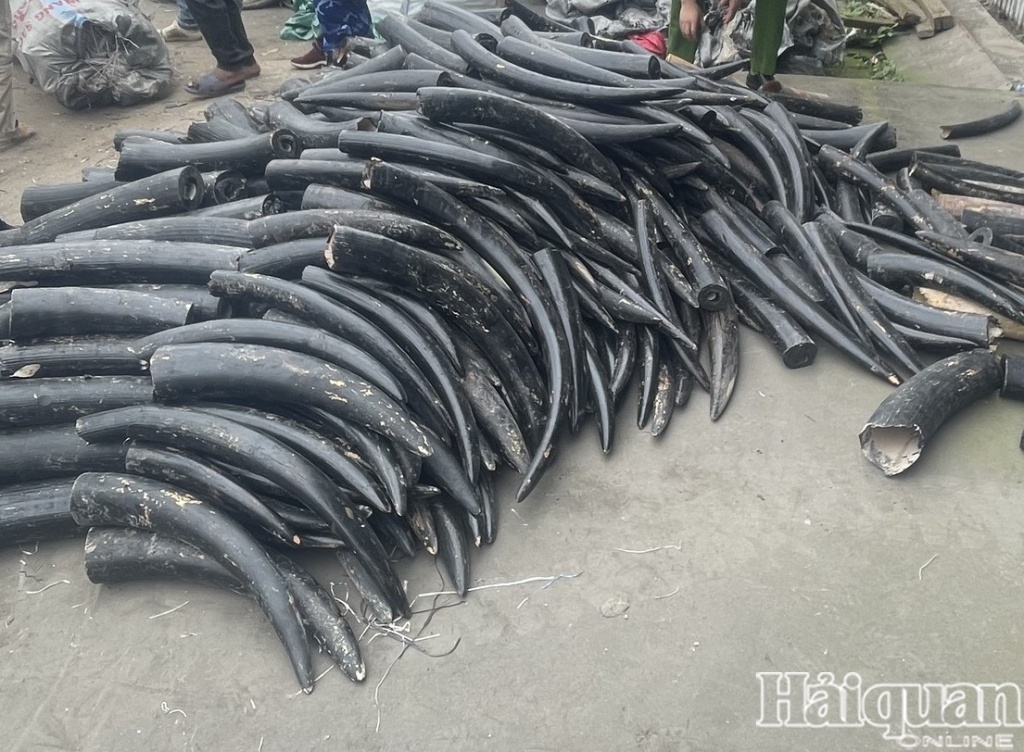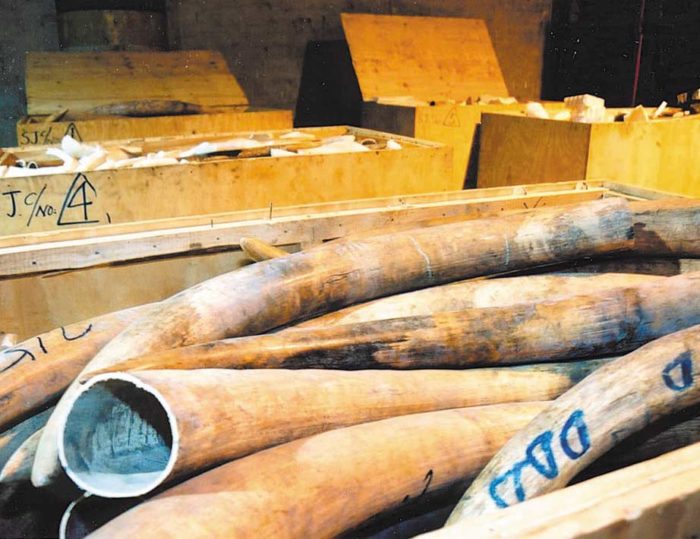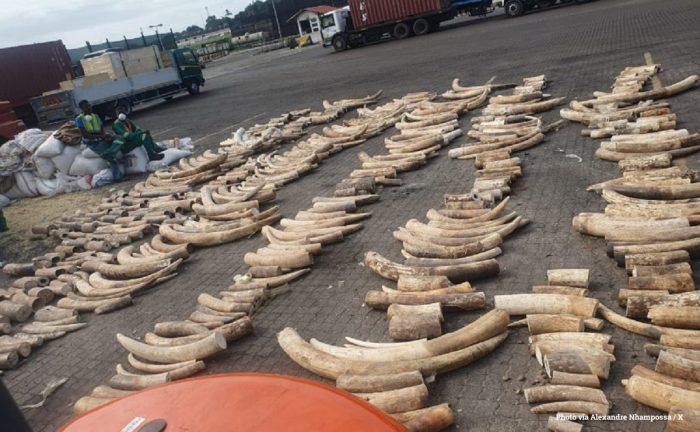Another day and another major elephant ivory trafficking incident – this shouldn’t still be happening



It’s April 2024, 35 years since the international ban on ivory trade and three-and-a-half decades of investment to tackle wildlife trafficking, yet Vietnamese news outlets this week announced the interception of another 1.6 tonnes of ivory, smuggled from Nigeria – the latest in a long and dismal catalogue of similar incidents.
Some will celebrate this interception and consider it a success and, while the individual officers should be acknowledged for their diligence, this case continues to illustrate institutional failures at many levels along the supply chain – a myriad of missed opportunities to detect and stop crime earlier in its tracks.
EIA and others have long expressed concerns about the infamous wildlife trafficking corridor between Nigeria and Vietnam and yet it looks like the route is still open for business.
Our Global Environment Crime Tracker has recorded at least 15 large-scale (i.e. above 500kg) incidents of ivory and pangolin scale trafficking linked to the corridor since 2018.
As with other forms of organised trafficking, each detection represents an opportunity to gather more evidence to increase the chances of frustrating the criminal networks behind them, but these incidents seem to repeat themselves and the outcomes tend to be the same.

Part of the seizure of tusks in Vietnam this week, painted black as a concealment method
Nigeria and Vietnam are currently the most significant export and import hubs, respectively, for illegal wildlife trade. However, EIA intelligence indicates that ivory smuggled out of Nigeria is likely to be poached from neighbouring countries and consolidated en route before reaching the port of export, invariably destined for Vietnam and other Asian countries.
To address these regional challenges, in February this year EIA hosted a regional roundtable workshop which brought together agencies from Cameroon, the Republic of Congo and Nigeria – an important step in forging professional, pro-active relationships.

A portion of the Singapore seizure of 2002 (c) Agri-Food and Veterinary Authority (AVA)
Before this latest container of ivory was finally stopped and searched, multiple offences would have been committed with countless, brutal killings and several successful smuggling incidents across land borders. A ‘transit’ country effectively falls foul of at least two crimes, one at the point when the ivory is smuggled into the country and another when it is smuggled out – and both are indicative of enforcement weaknesses and failures.
Initial enquiries have linked this shipment to several other suspicious importations, harking back to the 2002 interception of 6.2 tonnes of ivory from East Africa by Singapore authorities, which EIA investigations showed was linked to 19 earlier, unimpeded shipments.
At this stage, the origin of the ivory in this shipment is not clear, but there have been concerns of ivory ‘leakage’ from government-held stockpiles into illicit markets, a worrying possibility that EIA first flagged during height of the COVID-19 pandemic. Robust DNA testing would help identify whether this ivory originated from recently poached animals or from what should be secure government stockpiles.
International cooperation is key, not only to sharing intelligence prior to any overt enforcement action but also to share post-incident intelligence. In addition to existing multilateral mechanisms, a Memorandum of Understanding between Nigeria and Vietnam would further galvanise formal cooperation between the countries.
Such an agreement has been gathering dust for a couple of years now. What’s holding these two countries back from working together against criminals?
So what of this seizure? Isn’t it a good thing? Not when one considers the potential to use the contraband to catch the network by conducting a ‘controlled delivery’ – monitoring the shipment until it reaches its destination. Naysayers will argue how difficult that would be, but it is a technique advocated by the UN Office on Drugs and Crime and used regularly by law enforcement agencies around the world to detect and disrupt other forms of organised criminal activity.
In 2011, a workshop organised by the World Customs Organization brought representatives from 19 African and Asian countries (including Nigeria and Vietnam) together specifically to focus on controlled deliveries against wildlife and forest crime. Disappointingly, there is little indication that countries have implemented the recommendations of this workshop and used controlled deliveries as a pro-active investigation tool.
Furthermore, as EIA has repeatedly flagged, an interception without follow-up intelligence-led investigations and prosecution outcomes does little to disrupt or deter the criminal actors behind the act. Instead, it leaves the door wide open for wildlife traffickers to persist and thrive.
This latest incident suggests business as usual and a lack of evolved responses, but there are signs of hope. Nigeria saw some of its first federal-level prosecutions in the last year or so and updated endangered species legislation is in the pipeline.

March’s ivory seizure in Mozambique
Countries in West and Central Africa are also actively seeking improvements to international cooperation and funding through international mechanisms to tackle wildlife crime more effectively. Meanwhile, Vietnam’s Penal Code was updated in 2017 with increased penalties for wildlife trafficking offences.
Given the threat and impact of biodiversity loss, wildlife crime must become a priority, and enforcement agencies must investigate incidents as they would any other serious organised crime. This is especially important amid signs of increased ivory trafficking on both the African and Asian sides of the supply chain, including another large-scale ivory seizure taking place in Mozambique last month.
Short-term results may look good in the media and portray a sense of proactivity on behalf of government authorities, but in reality they do little in the fight against well-established criminal networks.
This is why EIA’s approach to tackling wildlife crime has always been, and will continue to be, advocating for long-term, sustainable progress through system-level changes.